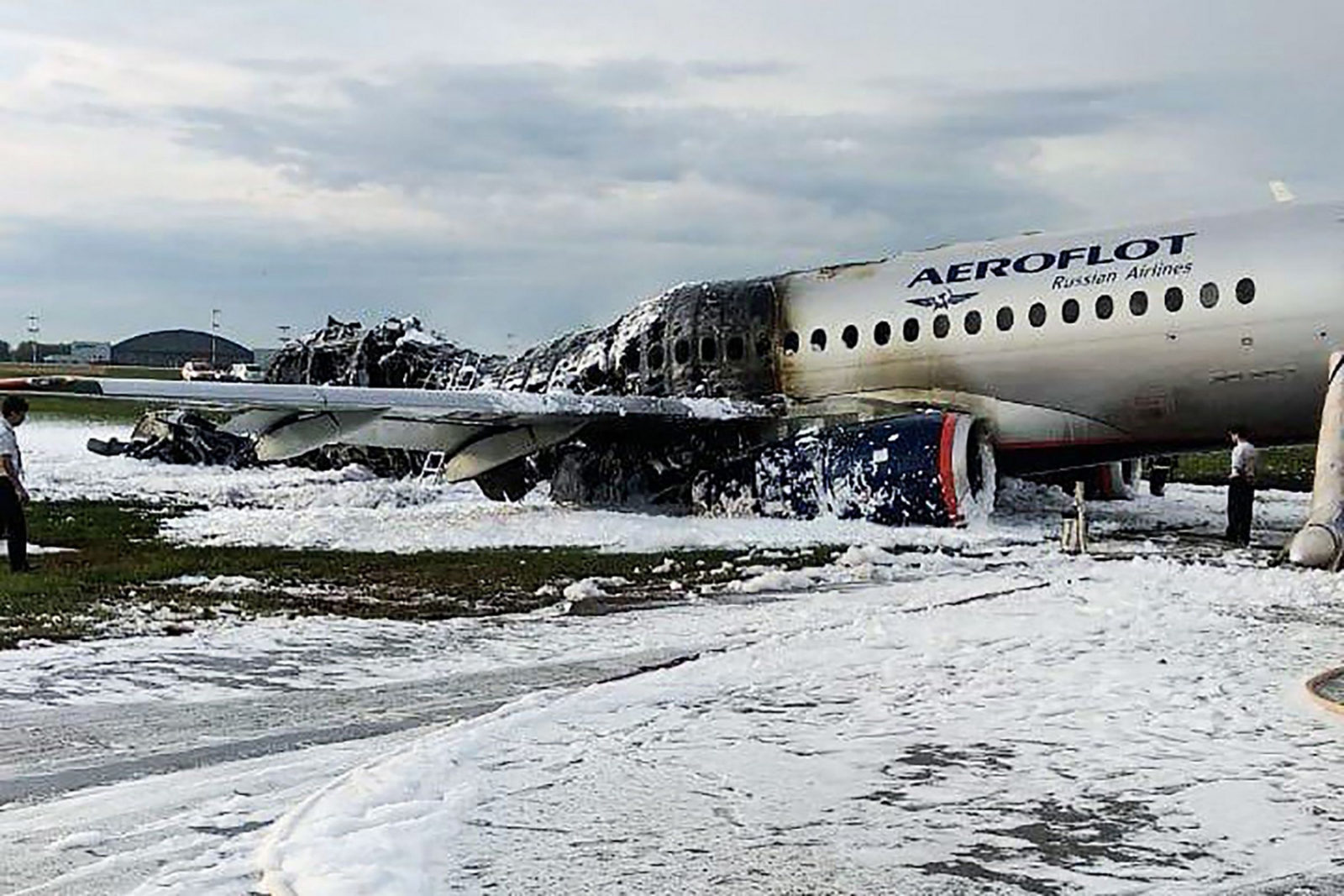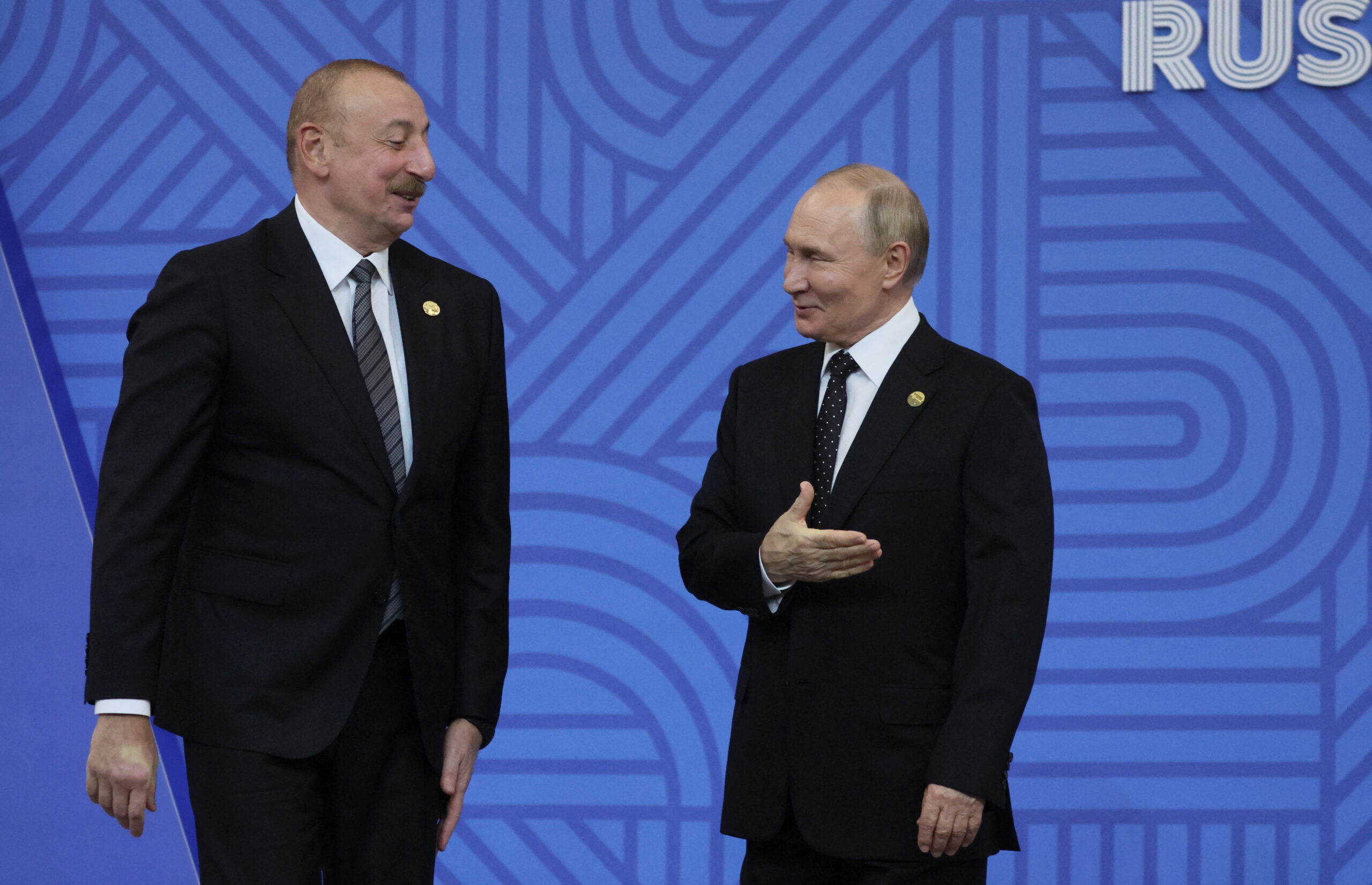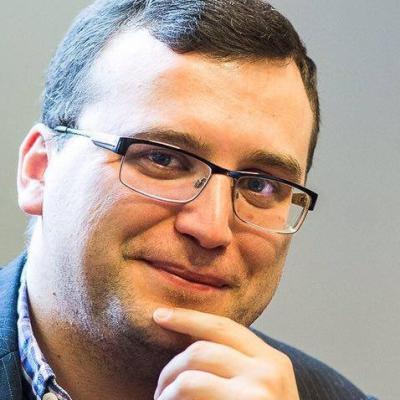On May 5, a Sukhoi Superjet 100 operated by Aeroflot attempted an emergency landing at Moscow’s Sheremetyevo airport. The aircraft caught fire during the attempt; 41 people were killed. In the aftermath of the tragedy, Russia’s dire record on air safety has come under heated discussion. Yet again.
Over the past decade, 478 people have died in civil aviation accidents in Russia. This figure only includes commercial and business flights; it does not take into account accidents involving military and private aircraft. Nor does it include those killed in the crash of the Polish presidential aeroplane in 2010 over Smolensk or the victims of the terrorist attack on a Russian plane above Egypt in 2015. For comparison, during the same decade, 96 people died in civil aviation accidents across the entire post-Soviet space excluding Russia. The last figure does not include the 298 victims of the MH-17 disaster, in which a Malaysian Airlines aeroplane shot down by a Russian Buk missile launcher in the sky above eastern Ukraine in 2014.
When it comes to these figures, the difference between Russia with those from other large countries with comparable levels of development is no less stark. In Brazil, 92 people have died in civil aviation accidents over the same decade; in Canada there were 53 deaths. But in Indonesia, which has double the population and a GDP one and a half times smaller than Russia, 555 people died. This number includes the 45 people who died on board a flight demonstration of the new Russian Sukhoi Superjet 100, or SSJ-100 in 2012. In fact, the two countries happen to be comparable in terms of the number of passengers transported annually on civilian flights: Russia’s 116 million in 2018 compared to Indonesia’s 110 million in 2017.
If we look at the statistics not for lost people, but for aircraft lost in accidents, then IATA data show that the countries of the CIS have some of the worst indicators in the world. This all prompts us to consider in detail the institutional reasons for the poor state of civil aviation in Russia today.
A State Monopoly
The current state of Russian civil aviation is largely the consequence of the trajectory along which it has developed since 1991. During the first phase, until the early 2000s, new airlines sprung up due to the privatisation of Soviet aviation enterprises with their fleets of aircraft and airports. At this time, the Russian aviation market was dominated by airlines controlled by or affiliated with federal or regional authorities, such as Aeroflot, Krasnoyarsk Airlines, Domodedovo Airlines, SibAviaTrans, UTair, Pulkovo (later renamed to “Rossiya”) and numerous others. At the same time Russia’s 241 airports, along with their runways, navigation equipment, and other assets, remained under state ownership; the authorities decided not to risk allowing business to play a role in such an important sector.
Nonetheless, the state still exercised important influence over the private aviation sector. Even Transaero, one of the largest companies in Russia which existed from 1991 to 2015, while formally private, belonged to Alexander and Olga Pleshakov. Tatyana Anodina, Alexander Pleshakov’s mother, has been chairperson of Russia’s Interstate Aviation Committee since 1991. Furthermore, Transaero received loans under state guarantee, meaning that the company was effectively subsidised by the Russian government. S7 (also known as “Siberian”) is Russia’s second largest airline by passenger traffic (transporting 35.8 million people in 2018), but until 2013, 25.5% of its shares belonged to the Russian government.
The second stage of development of private aviation in Russia began on the back of the oil boom in the 2000s, and lasted until the economic crisis of 2008-2009. During this period, Russian airlines notably increased their passenger numbers and started to replace Soviet and Russian designed aircraft with newer Boeing and Airbus models. At the same time, the market saw the emergence of Russian leasing companies, a new sector dominated by state-owned players. Among them were the State Transport Leasing Company, Ilyushin Finance, the Financial Leasing Company, Sberbank Leasing, and VTB Leasing.
Meanwhile, Aeroflot began its expansion. The airline received not only more and more new routes, but also royalties from transit flights conducted by foreign airlines through Russian airspace (in recent years these royalties have reached between $500 million and $600 million every year.) The government also attempted to combine smaller regional state-owned airlines into the new company AirUnion.
The third stage began after 2009. On one hand, it was marked by a rapid succession of airline bankruptcies; among them those regional airlines which had been absorbed into AirUnion. The government stood by and let these smaller companies die, while it attempted to assist Transaero for several years. On the other hand, Aeroflot grew even larger; it took over new routes as well as the Rossiya airline. The low cost airline Pobeda, a subsidiary of Aeroflot, also entered the market at this time. By 2018, the total annual number of passengers transported by Aeroflot and its subsidiaries stood at more than 54 million people. By comparison, S7 and its subsidiary Globus Airlines transported just 16 million people.
The Russian state’s near monopoly over domestic commercial aviation, together with tax hikes and a broader economic stagnation, has made things more and more difficult for Russian airlines. They are compelled to raise ticket prices. In some cases, such as that of UTair, they are forced to ask banks to restructure their debt repayments. In others, airlines have to ask the Russian state to intervene, or request help in reducing overheads for aircraft maintenance and crew salaries.
Thus Russian civil aviation enters a downward spiral which results in yet further monopolisation. This inevitably raises questions about the efficiency of all the county’s airlines; both those which have had to appeal to the state for help, and those which haven’t yet. It is unlikely that further grim news of aviation accidents will shock the situation into improving in the foreseeable future. But here, another factor comes into play.
Grounded in Red Tape
Over these years, a complicated system of state regulation of civil aviation emerged. It has now grown to involve a number of government agencies such as:
- The State Corporation for Management of Air Traffic
- Rosaviatsiya or the Federal Air Transport Agency, the state aviation watchdog which oversees state corporations responsible for organising air traffic
- Rostransnadzor or the Federal Service for Supervision of Transport
- The Ministry of Transport, which oversees the work of the first two agencies
- The Ministry of Industry and Trade
- The General Prosecutor’s Office (via a network of regional prosecutors’ offices responsible for transport.)
As a result, the Russian authorities have kept for themselves both the role of the country’s chief air carrier alongside a clearly redundant assembly of regulatory functions. For example, in Russia today civil aviation pilots can only be trained in two state universities in St Petersburg and Ulyanovsk, as well as six colleges affiliated to these universities. Military pilots can also transfer to civilian service. The only private educational institution which trained pilots independently has been stripped of its licence, and several dozen pilot licences it had issues were all annulled in 2018. While foreign pilots have been able to work in Russia since 2014, they are restricted to an annual quota of 200. Admittedly, this quota is hardly ever used; due to the country’s economic downturn the demand is down.
It turns out that civil aviation in Russia is governed by rules outside the market which stimulate the monopolisation of every facet of the field from the supply of jet fuel. These rules also exacerbate airlines’ economic inefficiency and the lack of transparency around their operation.
In addition, the proliferation of regulatory and inspection agencies has reproduced Soviet-era management practices which focused on frequently punishing of individual airlines, pilots, or ground service workers for minor errors, rather than on the pre-emptive prevention of far more serious safety threats. Hence the high number of aviation accidents.
The State, Flying High
All the events and trends outlined above have taken place alongside a long effort by the Russian government to develop domestic aircraft production. Naturally, this production is to be carried out exclusively by state owned manufacturers. By the mid-2000s, all the most significant assets of the Russian aviation industry had been consolidated into networks of state corporations.
The flagship project was the Sukhoi Superjet, or SSJ-100. Development of the aircraft cost Russia an unknown amount, estimated between $1.5 billion to $7 billion. The upper estimate does not seem too unrealistic, especially not if we consider the fact that in recent months, the government announced plans to allocate more than $1.5 billion to subsidise the leasing and modernisation of the aircraft, as well as switching some of its components to Russian produced technology.
Aeroflot currently owns the most SSJ-100s in service: they comprise 50 of the airline’s 151 active aircraft, or 20% of its whole fleet. However, due to the many failures of the design and the difficulties in supplying replacement parts, the SSJ-100 is flown less frequently than other aircraft in the fleet: only 3.5 hours per day compared to 10-12 hours for foreign produced aircraft. System malfunctions with the SSJ-100s rose sharply after the disaster on 5 May, 2019. Within a matter of days after the accident, Aeroflot cancelled dozens of flights that its SSJ-100s were to perform.
So it seems that Russia’s largest state owned airline actually pays for its privileged position in the market by purchasing substandard aircraft from a state owned manufacturer. Taxpayers, as well as passengers, are left footing the final bill.
But that’s not all. In the early 2020s, new aircraft should enter into production: the medium-haul MS-21 and the regional IL-114-300. It is not yet clear whether Russia’s manufacturing plants will be able to produce these aircraft in the planned quantities (70 per year for the MS-21 and 12 per year for the IL-114-300.) Moreover, it is worth remembering that the goal of producing 60 SSJ-100s has not yet been reached; only rarely are 30 or more are produced a year.
Meanwhile, several recent developments have introduced a degree of uncertainty into the future of the MS-21 project: the USA and Japan have banned the supply of composite parts, and the attempt to develop a Russian produced engine for the aircraft has been marred by difficulties. Furthermore, the cost of the project now officially exceeds $7 billion. Despite all the above, Moscow has not lost its optimism. Neither has Aeroflot; the airline recently ordered 50 of these aircraft in advance.
The Russian authorities have taken further steps to guarantee the success of their new aviation project. From 2018, all state owned companies are obliged to coordinate any purchases of foreign aircraft and helicopters worth more than one billion rubles ($16 million) with the Russian government. Such coordination concerning aircraft purchases is becoming routine, even while the prospects for domestically produced alternatives remain unclear. Nevertheless, over the coming decade the same procedure could easily be imposed upon private companies too, thereby guaranteeing demand for domestic aircraft manufacturers. But it doesn’t end there: a national airline ticket reservation system is currently under development with assistance from Rostech. When it is operational, all Russian airlines will be required to switch to it.
In other words, the Kremlin simply does not care what the market makes of its initiatives in the field of civil aviation. More precisely, there is only one concern at stake here: securing a reliable cash flow from Russian taxpayers to various state owned companies. However, historical experience demonstrates that real security in commercial aviation can only be achieved if market principles are allowed to work.










